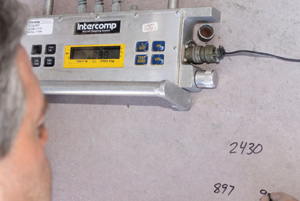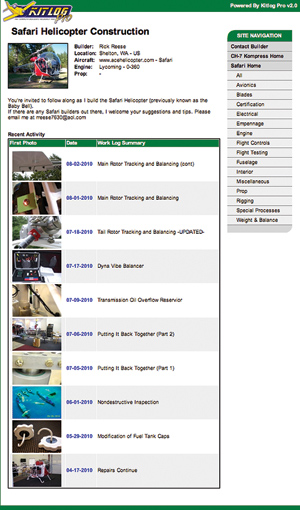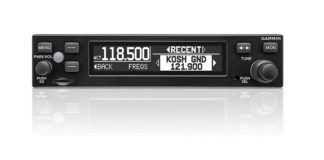As a way to prove that you have built the "majority" of your kit aircraft, documentation is almost as important as sheet aluminum, fiberglass and blisters on your rivet-gun hand. When it comes time to inspect your aircraft, the FAA representative or the Designated Airworthiness Representative (DAR) will want to see proof that you did the work you claim on the various forms.
A long-accepted practice is to keep a builder’s log. Because the humans who decide to create an airplane in their garage are as different as the airplane types to be built, you’ll see a wide range of log types. Some are casual about it. "This week we closed the wing." A photo here and a photo there, and you’re done. Others will document every single step, calling out materials, processes, time spent, notes on the clarity (or lack thereof) of the builder’s manual and other aspects of the build in such detail that you wonder if the build time could be cut in half with just a court reporter on hand.
Paper or Plastic?
If you have the mind for it, you’ll benefit from a fairly detailed builder log. For one thing, it’ll help you keep your place in the process and remind you of items deferred or in need of a redo. Moreover, after you’ve been flying and the airplane transitions from building to maintenance, the log will be helpful to remind you which AN fitting is used for a fuel vent, for example, or which throttle cable part number you ordered from Aircraft Spruce.

If you document as you go along, the process is much less of a burden.
For most builders, a simple paper log will suffice, but organization is critical. It’s imperative that you maintain the log in one place, and update it the same way every time. Writing notes on scraps of paper with the intention of putting them in a more organized format later is the fast lane to an incomplete log. The log, whether it’s a set of legal-sized tablets or sheets fitted to a three-ring binder, needs to be with you while you’re working. What’s more, it’s vitally important that you create a routine. A good one is to knock off 45 minutes before you’re actually out of time-to watch your daughter’s softball game or appreciate your spouse’s cooking-using 30 minutes of that to clean the work area and 15 to document your progress for the session. Do a little each time and it’s easy.

It’s fine to use the concrete floor as your scratch board, but be sure to move those figures into your builder log before you wash up.
Digital Means
In our world of almost universal online access, many builders have taken to tracking and sharing their build process virtually. There are commercial options that allow you to upload text and photos to web sites where the data will be maintained on someone else’s backed-up system. (If you decide to keep your build log local, please take backup precautions with your computer files.)
Expercraft and KitLog both allow uploading of build information and photos. Expercraft has a novel two-tier system. One is the Builder Productivity Edition ($4.95/month), while the other is the Basic Log Edition (set your own price). The essential difference is that the Basic is a closed project; you can see the progress you’ve made and keep track of time, money spent (ouch!) and other items, but can’t share that information with others. The Productivity version includes a "personal web site" within the Expercraft system that other builders can see. You also get a printable log and a downloadable backup.
The Expercraft system is nicely done and simple to use, as is the KitLog product (see sidebar). Again, you have to discipline yourself to sit down at the computer.
Blog Is Your Copilot
Commercial logging programs have the benefit that the designs are preformed for this specific application, but if you’re a bit more computer literate, there are plenty of free (or nearly free) alternatives. One is to create your own web site, which can be done with basic site-building software (there are many in the PC world, plus iWeb for the Mac), and maintain it. The main reason you would want to create a builder web site is to share your efforts with others; in truth, creating a private log is easier than building and maintaining a web site, but more builders today want to share their experience and convey to family and friends that this thing will get done.
Creating your own web site can be done with free software, but you’ll have to host the site somewhere, and that can cost as little as $5/month. Free services include blogging (a connection of the terms web and log, web log, blog…) at places like Google’s Blogger. (We actually used Blogger for an early iteration of our Newsline, and it worked OK.) Uploading words and photos to Blogger is easy, and you can define who sees the page; it can be public or limited to a circle of friends.
Speaking of friends, we’re seeing increasing use of Facebook for builder logs. The system isn’t really set up for it, but you can make it work by posting photos to Albums and writing your progress as daily status reports augmented by Notes. You can even set up a unique Facebook page (separate from your personal page) to document your build. Facebook is, of course, free, but you’ll have to keep an eye on the company’s penchant for changing security options without informing users first. Remember, too, that Facebook keeps everything you’ve ever posted pretty much forever even if you delete your account.
Get It Write
However you do it, documenting your build is vitally important. Set up a system and follow it religiously. Your DAR will smile when he sees your documentation and photos-he’ll also chuckle to see how much grayer you are today than when you started, because it happened to him, too-and will know at a glance if you’re the true builder with a sense of organization. Can’t hurt.






